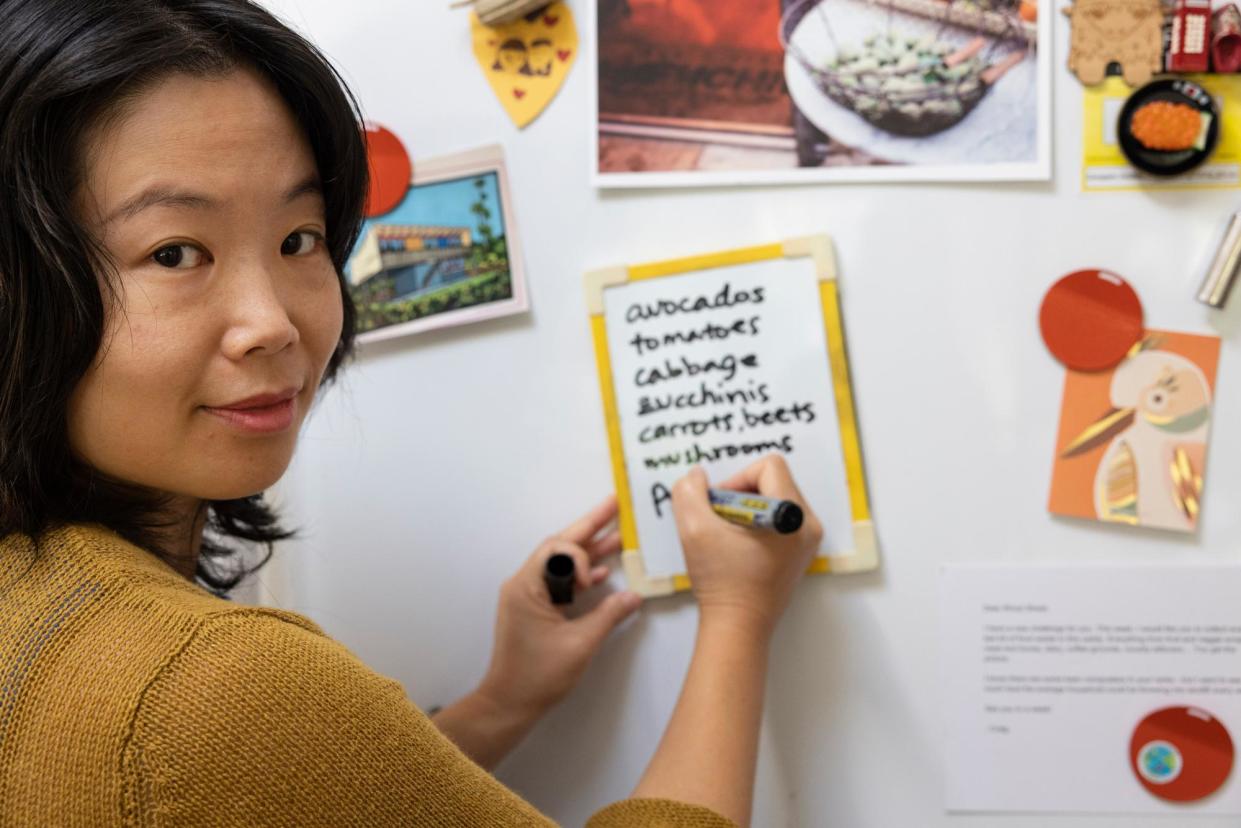‘Every household needs to work out a system for their fridge’: how to throw out less food

Lucy Leonardi has been practising sustainable strategies for reducing food waste at home for about six years now.
After participating in the ABC’s War on Waste program, where residents of one street in Sydney learned how to reduce their food waste, the co-author of educational kid’s book Food Wise started to think even more about her family’s consumption.
“Every household needs to work out a system for their fridge,” says Leonardi.
“For example I like to rotate what is in the crisper drawer. If it’s getting a bit wrinkly, then I’ll put it in the ‘use it up’ box. Then, there’s another box just for condiments that are close to the expiry date.”
Related:‘Fruit bowls are out’: the best ways to store fresh produce, according to experts
Leonardi, who runs Who Does the Dishes, a food blog where she interviews sustainability-minded cooks at home, is keen to help people find creative ways of using up odds and ends of vegetables like cauliflower leaves, broccoli stalks and carrot tops.
She also says teaching the next generation about produce is key to reducing waste and growing awareness of how food gets from farm to table.
“That’s the best thing about avoiding food waste. You can do it as a family,” says Leonardi.
“We need to reconnect with that and anticipate things that are seasonal … and get back to the beginnings of how food is growing.”
About 1.3bn tonnes of food is wasted globally each year, of which Australia’s contribution is more than 7.6m tonnes – mostly from households. The national food waste strategy aims to halve that number by 2030.
OzHarvest, which collects surplus food from supermarkets, cafes, hotels, airlines and restaurants and distributes it across Australia to people in need, created “Use it up” labelling tape as an easy strategy to reduce food waste in the home. The tape has slogans including “cook me”, “use me up” and “pick me” which are designed to act as a visual prompt when you open the fridge or freezer.
Mark Boulet, a behavioural scientist and co-author of OzHarvest’s Halving household food waste report, says tackling food waste is a unique sustainability challenge that everyone can get involved in.
“With food waste, the problem is very much within the household,” he says.
“Things like climate change, or water pollution, there’s small things you can do but the really big ticket stuff is often beyond the sphere of control of the individual.”
OzHarvest’s report found that those with young children and busy lifestyles were more likely to generate the most food waste, particularly as they cater to evolving tastes and food preferences of their children.
“The majority of us hate food waste … everyone has intentions not to waste food,” says Boulet.
“Food waste is kind of like a death by a thousand cuts … it’s a little bit here, a little bit there, and it adds up.”
Boulet says one example of this is the compost bin that sits on the kitchen bench. While it helps to get rid of scraps and rotten food, it also acts as a way to “sweep the problem under the carpet”.
Boulet says the key to managing food waste is being realistic about how much food you consume. For those cooking on a smaller scale, online shopping (despite plastic packaging concerns) can be a good tool to reduce food waste, as it is commonly done at home when you can check what you have in the pantry instead of being enticed by what is on special in the supermarket.
“People who buy at markets or grow their own food or are very health conscious, are often also very aspirational in their fruit and vegetable consumption,” he says.
“They think they’re going to eat more than they actually do, and sometimes they actually tend to waste more. You’ve got a busy week and you’re exhausted and it is much easier to just get pizza.”
For Bronwyn O’Brien, thinking about food waste for the first time has helped her family cut down on temptations like these, with the help of “use it up” tape.
O’Brien, who lives with her partner and two young children, says leftovers turned into a “sea of Tupperware” and used to dominate her fridge at the end of the week.
“It probably hasn’t changed how we shop but … if what we had planned to cook on Wednesday we’re suddenly no longer cooking … it’s changed us from letting that food go to waste,” says O’Brien.
“If it’s something like chicken … I might just quickly cook it the next day for sandwiches or something instead.”
Best of all, her family now rarely order in.
“We were having takeaway probably twice a week, and we’re only really having it now if it’s with friends,” she says.
“It’s directly linked with us wanting to change our approach to food waste.”


